 |
Satish Lele lelepiping@gmail.com |
View this page as YouTube Video Presentation
BOM means Bill of Material. This is normally a listing of only the material shown on an individual specific drawing such as a piping Isometric.
BOQ means Bill of Quantity (also called Material Summary). This is the totaling of all the quantities from all the BOMís from all the project to send to a piping supplier for pricing or purchase.
There are normally three material take-offs sessions during a process plant project. These are preliminary, secondary and final.
Preliminary MTO: A preliminary MTO is a material take-off very early in the design process when only a limited amount of information is known and very little detail has been developed. A preliminary MTO is normally done for two reasons. The first is to assist with the early "order-of-magnitude" (+/- 10%) estimate for the overall project. The second reason is to issue early order of magnitude Request for Quote for piping materials.
The preliminary MTO is only possible when there is a Plot Plan that is "Approved" by the Client or has been issued to the client for approval. This is done long before there is any detailed work started on the 3D design model.
A preliminary MTO is best done by very strong well experienced senior piping designers who are familiar with the project.
For the preliminary MTO we used a formatted form on which we could indicate the number or amount of material required for each line. On the form I would identify the line number along with the line class. I would then look at this line on the P&ID and on the Plot Plan and determine the routing of the pipe. Then in the boxes (on the form) I would then mark the amount of pipe required for each size required for that line. Then I would count the number of fittings required, starting with 90 degree elbows. Then continuing through all the other inline fittings and online fittings. After the fittings I would count all the flanges by size. Then I would count all the valves from the P&ID. The high point vents and low point drains would be made last based on an educated guess. Then I would take another form and do another line. As I did each line I would "Yellow" off the line on the P&ID so at the end all the lines are accounted for. As the forms were completed they would be reviewed by the Area Supervisor and then forwarded to the Material Control Group who would process the data to produce the RFQ's.
Secondary MTO: The primary reason for the Secondary MTO is to update quantities for the issue of the actual Purchase orders for piping material. A second reason is to update the project estimate.
The Secondary MTO can only be done when there is significant progress completed on the 3D design model (or other electronic design method). However it must be done early enough to insure that the procurement (purchase and delivery) of the piping material to the field will fit the overall project schedule.
The Material Control Group does it. The Material Control Group would access the electronic data base and down-load all the material available at that time. Some factoring would be done by the Material Control Group and the Piping Design Leads to allow for work not done yet.
Final MTO: The final MTO is done first to identify any item added late in the project or anything that was missed on the Preliminary or Secondary MTO's. The second reason for the Final MTO is to get a fix on the final job costs. The Final MTO is done when the last Isometric has been issued. The Material Control Group does it.
The Material Control Group would access the electronic data base and down-load all the material. Any differences between the Final MTO and the Secondary MTO would be identified. Purchase orders would be issued for the updated quantities.
Each Isometric drawing indicates the bill of material required for that pipeline.
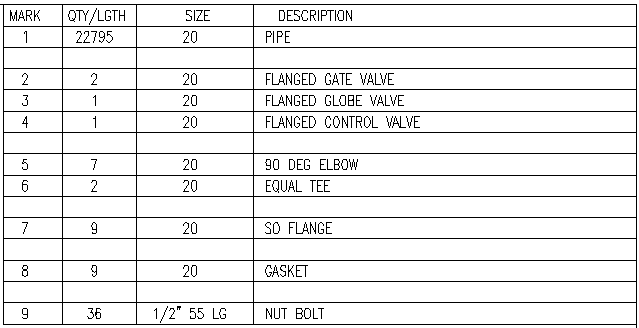
These are entered into excel sheet, according to the size and specification of the pipe.
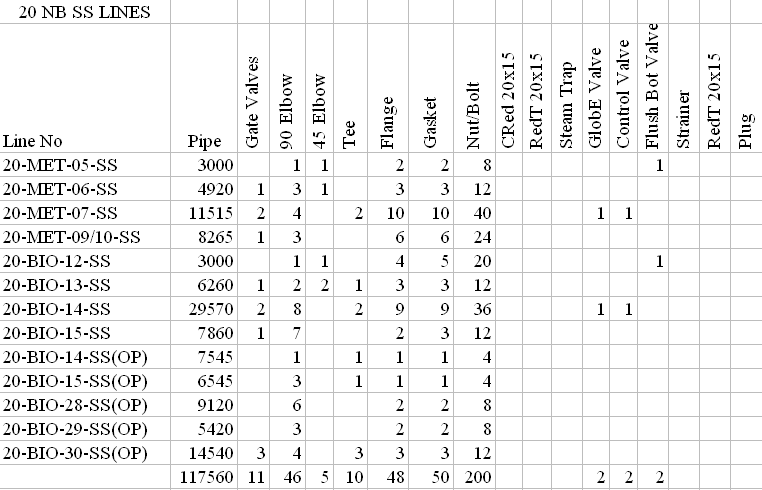
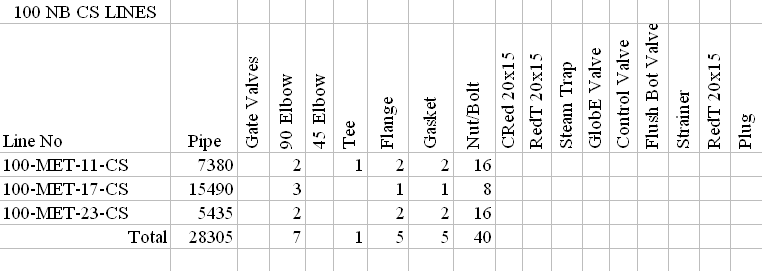
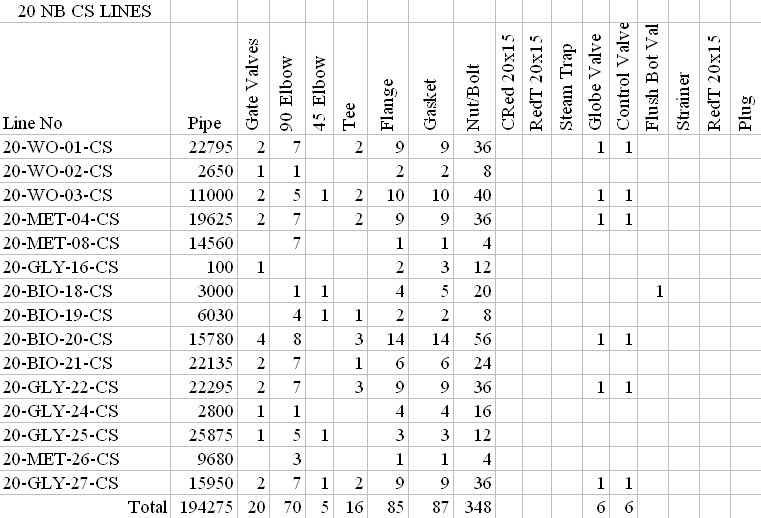
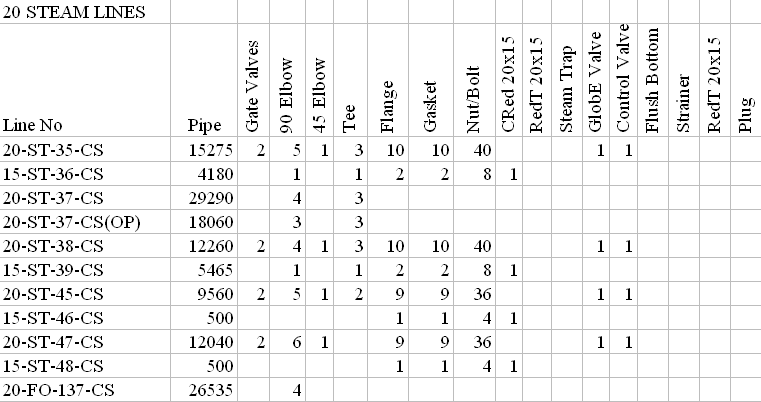

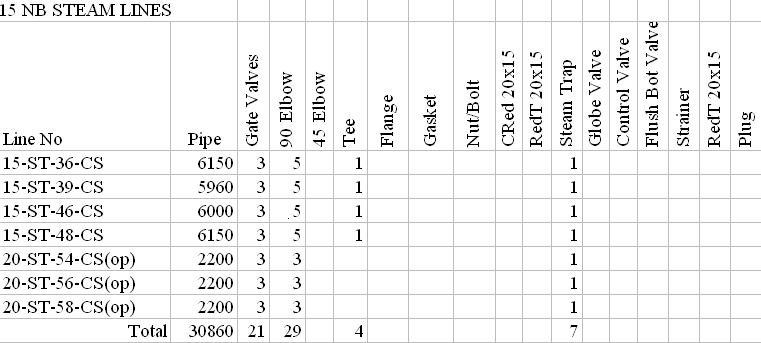
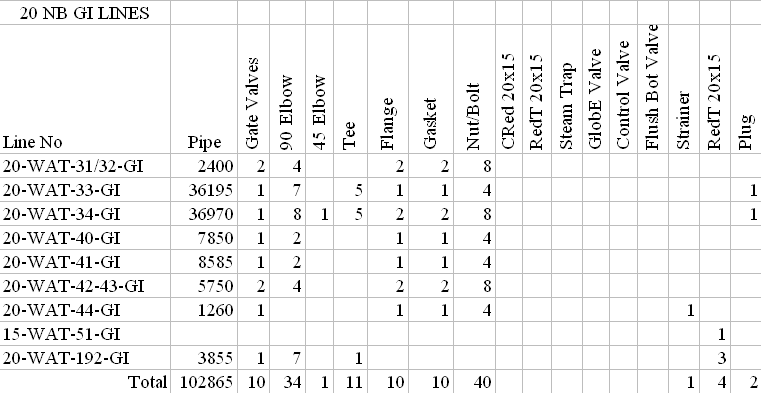

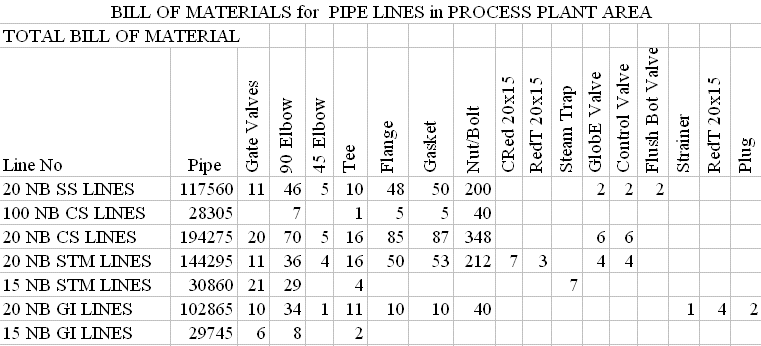
 to get all the information as a eBook
to get all the information as a eBook
